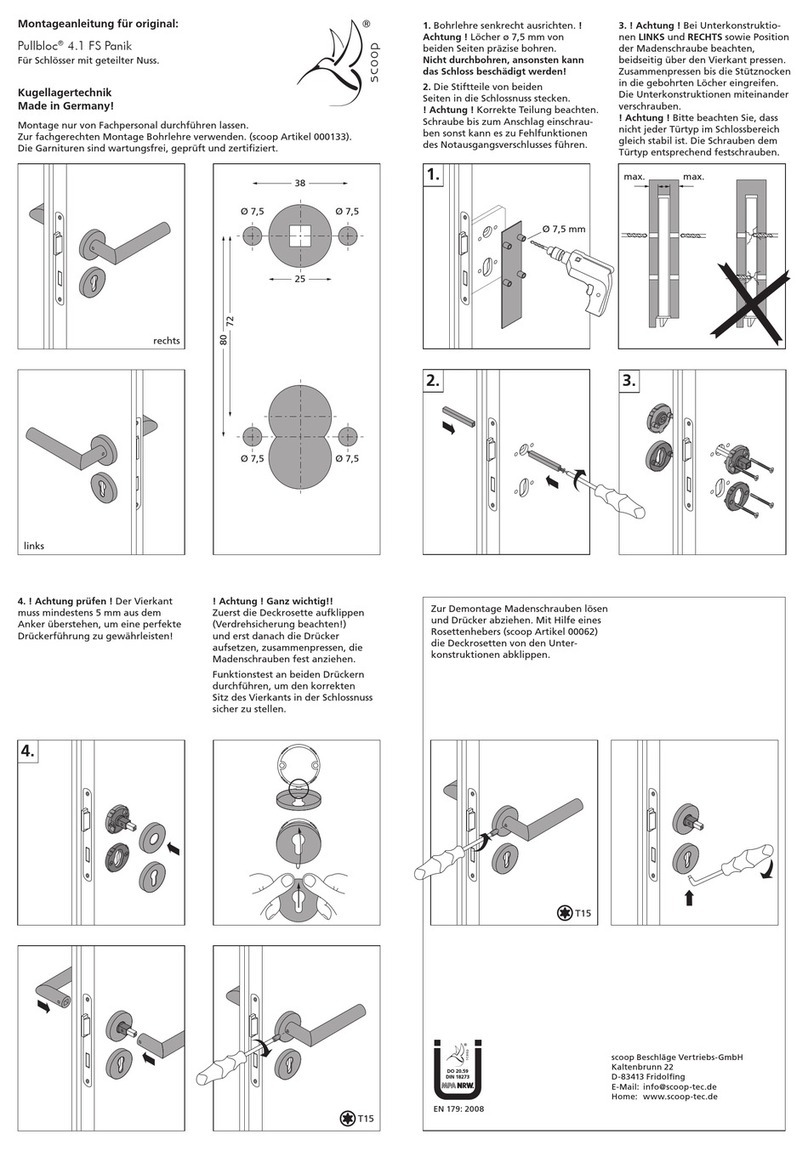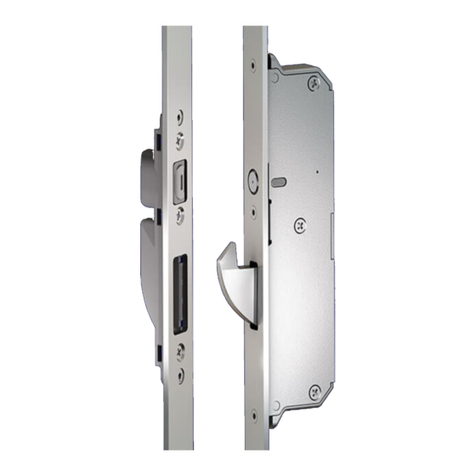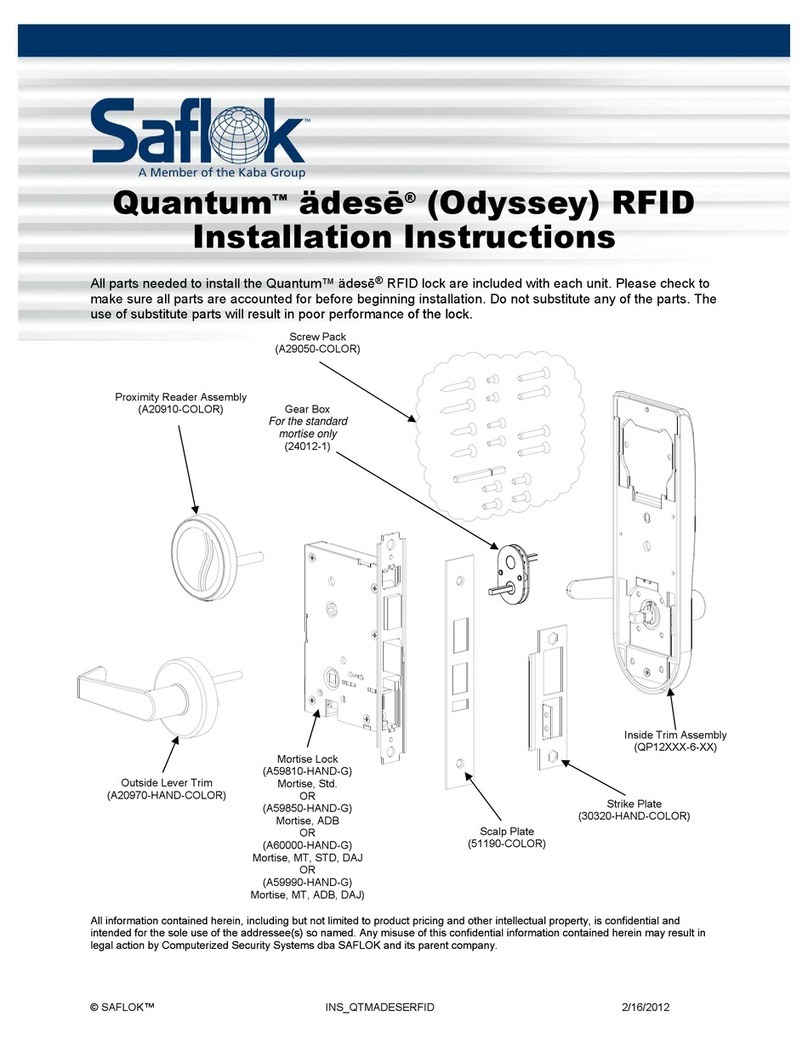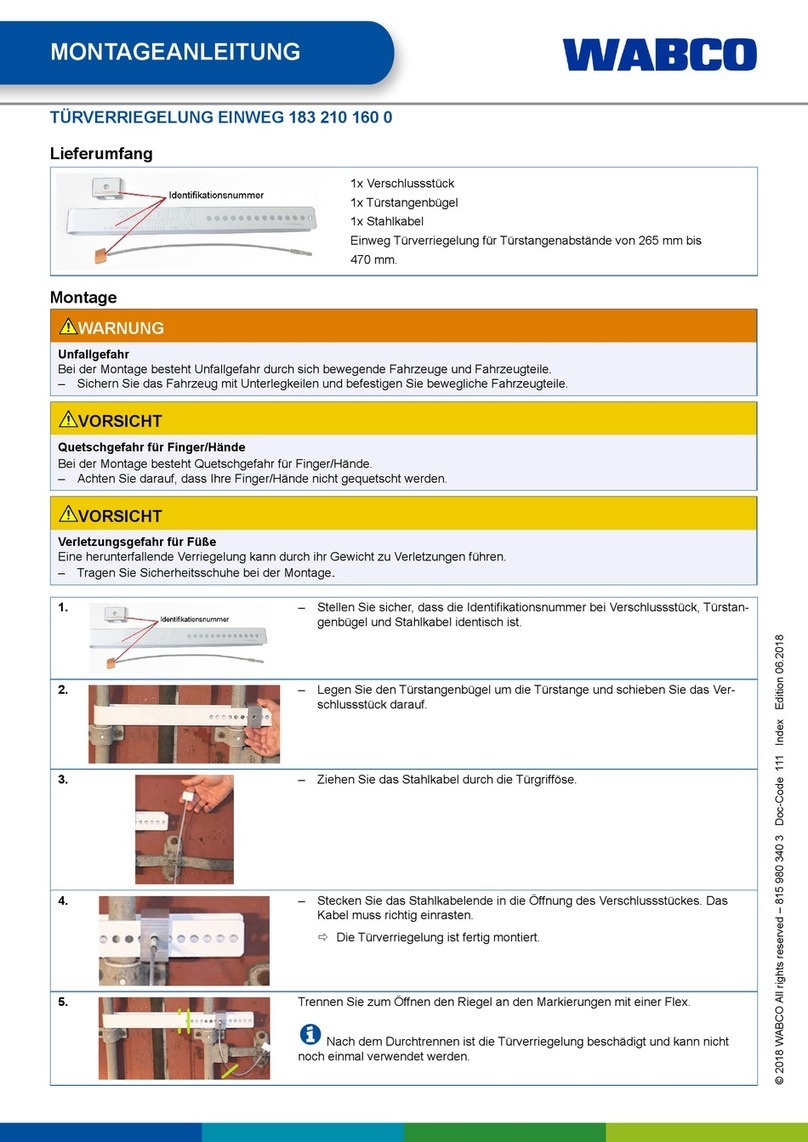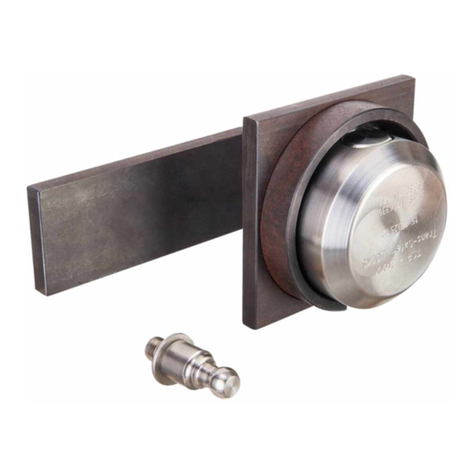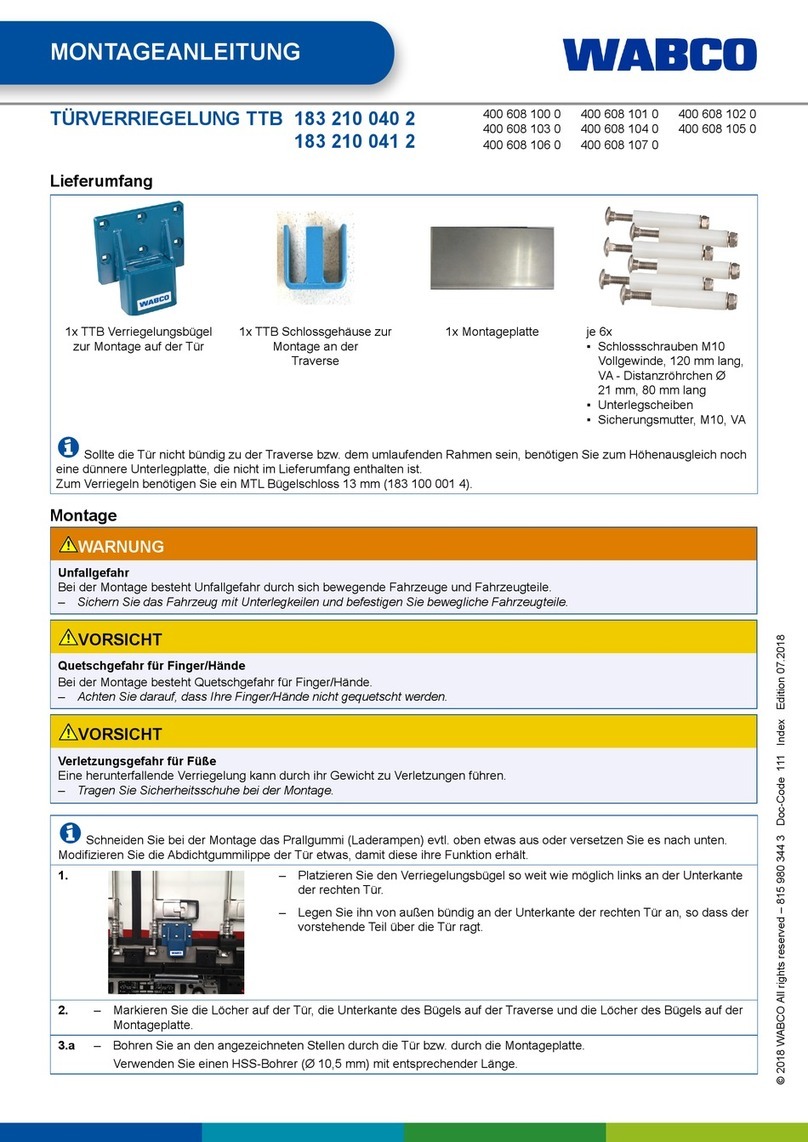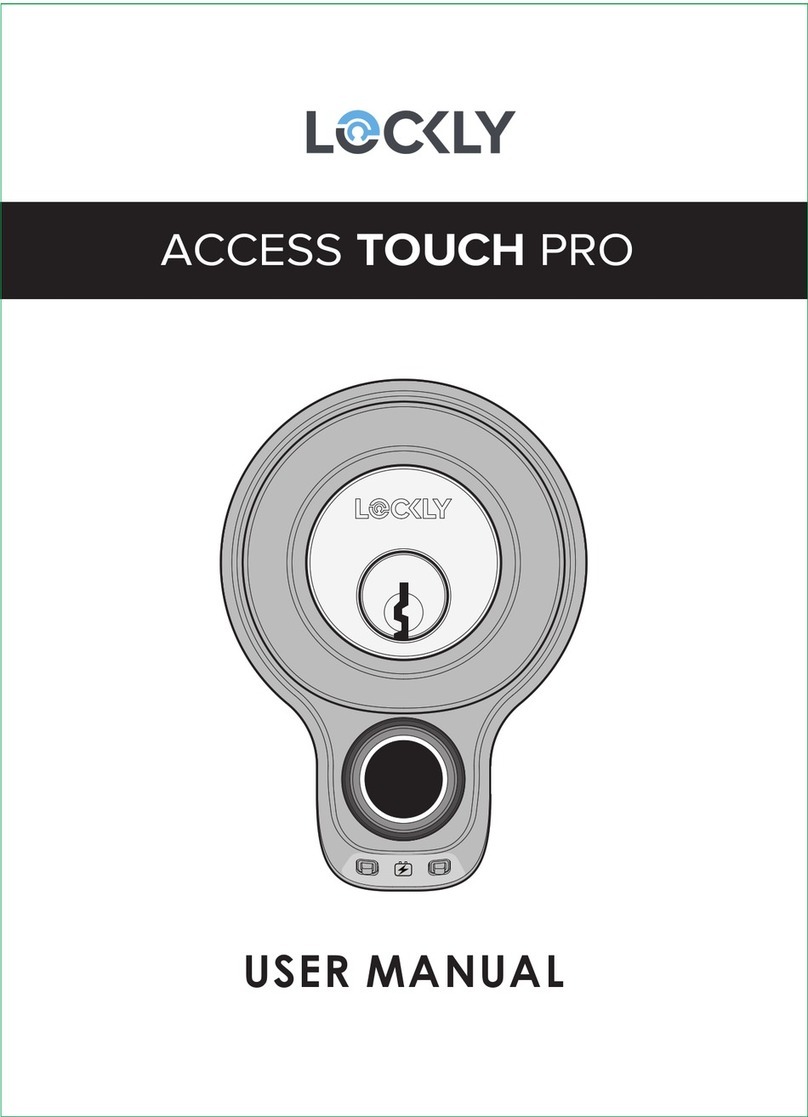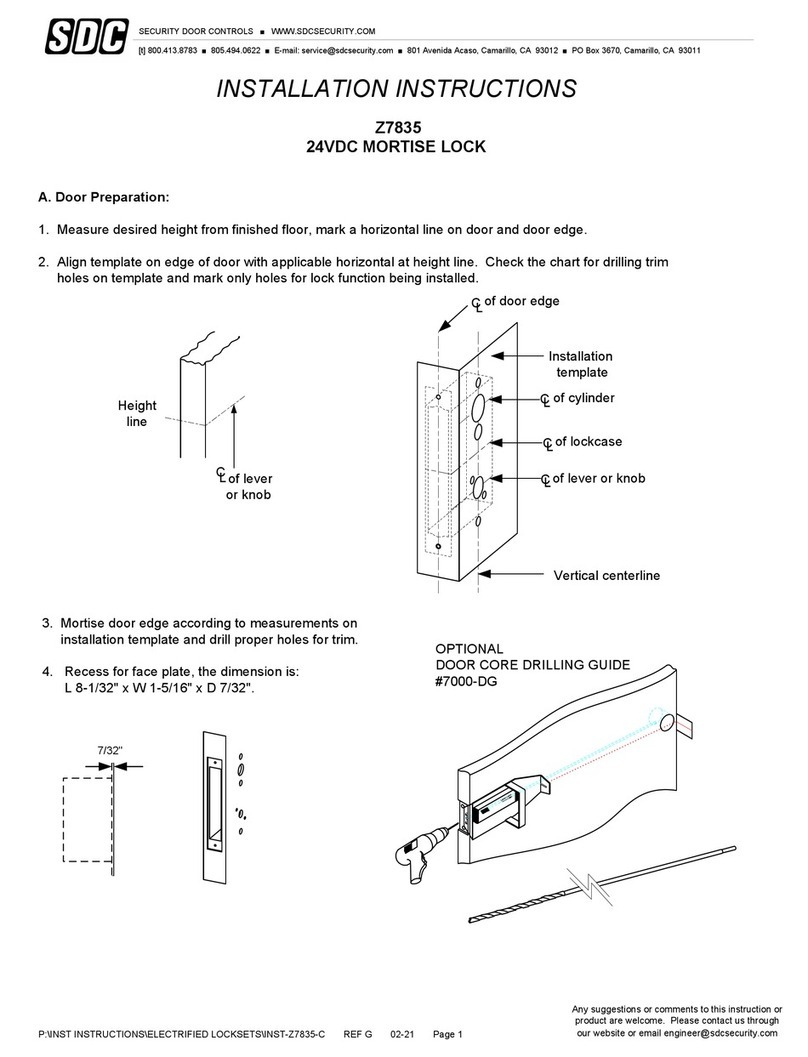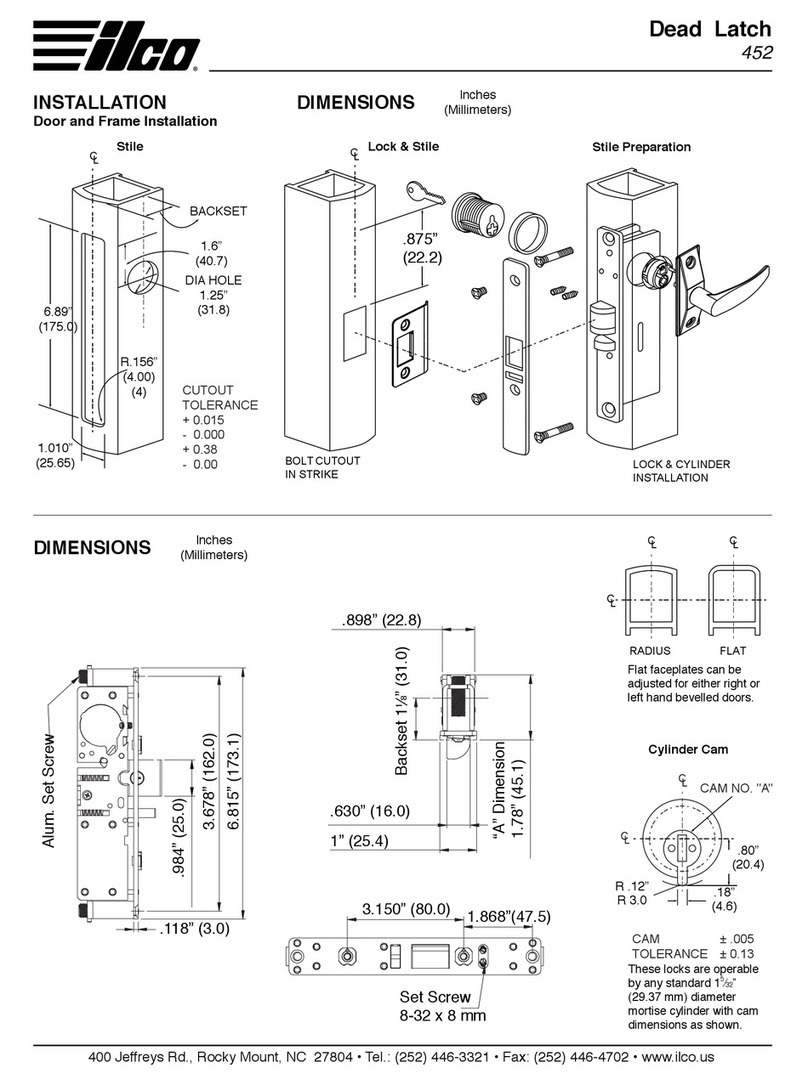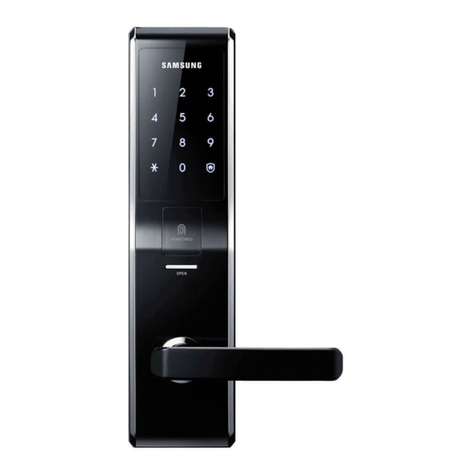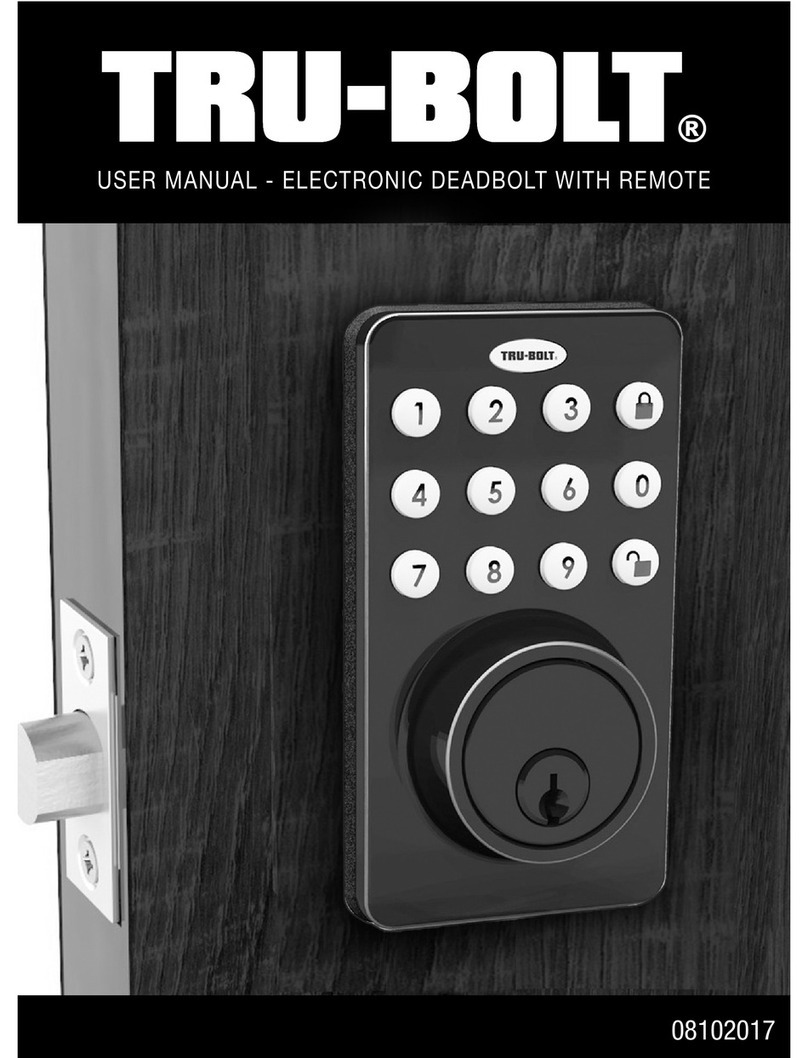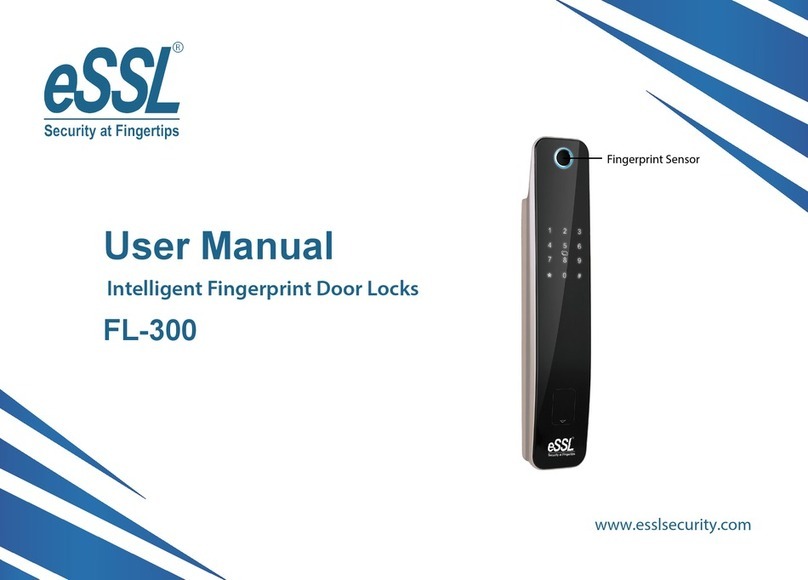
MONTAGEANLEITUNG
© 2018 WABCO All rights reserved – 815 980 358 3 Doc-Code 111 Index Edition 07.2018
1. Vorbereitung für die Montage an der linken Tür
– Schneiden Sie die Schablone an der dick gezeichneten Linie gerade auseinander.
– Bringen Sie auf der linken Tür das entsprechende Schablonenteil so weit rechts wie möglich von außen an.
Achten Sie
darauf, dass auf der Innenseite der Tür keine störenden Objekte sind.
– Schrauben Sie den Dummy auf die kleine Grundplatte.
– Sichern Sie die Schraube zusätzlich mit LOCTITE (hochfest).
– Schrauben Sie die vier Gewindestangen in die Gewindelöcher der kleinen Grundplatte. Sie benötigen nur die äußeren
Gewindelöcher (links und rechts oben, sowie links und rechts unten).
– Sichern Sie die Gewindestangen zusätzlich mit LOCTITE (hochfest).
2. Montage an der linken Tür
Benötigte Teile: Montageplatte; 4 Unterlegscheiben; 4 Sechskantmuttern; kleine Grundplatte mit angeschraubtem Dummy und 4
Gewindestangen. Auf dem angebrachten Schablonenteil sehen Sie insgesamt 6 Bohrlöcher. Sie benötigen nur die äußeren (links
und rechts oben, sowie links und rechts unten).
– Bohren Sie diese vier Bohrlöcher mit einem 5 mm HSS-Bohrer vor.
– Vergrößern Sie die Bohrlöcher mit einem 12,5 mm HSS-Bohrer.
– Entgraten Sie anschließend alle scharfen Kanten.
– Nehmen Sie die Schablone wieder ab.
– Stecken Sie die Gewindestangen (der kleinen Grundplatte) durch die gebohrten Löcher (der Dummy muss auf der linken
Seite sein).
– Setzen Sie die ovalen Öffnungen der Montageplatte von der Innenseite der Tür über die Gewindestangen, so dass die Zunge
über die Tür ragt.
– Legen Sie je eine Unterlegscheibe und eine Mutter auf die Gewindestangen.
– Ziehen Sie die Muttern fest an.
Achten Sie darauf, die Montageplatte rechtwinklig auszurichten.
– Sichern Sie die Muttern zusätzlich mit LOCTITE (hochfest).
3. Vorbereitung für die Montage an der rechten Tür
Für die folgenden Montageschritte benötigen Sie eine zweite Person.
– Bringen Sie die Montageplatte in den Container bzw. Laderaum.
– Lassen Sie die Türen von außen richtig schließen.
ÖTüren müssen vollständig geschlosen sein.
– Markieren Sie das M20 Gewinde-Loch der Montageplatte auf der Innentür.
– Öffnen Sie die Türen wieder.
– Bohren Sie in der Mitte der markierten Stelle mit einem 5 mm HSS-Bohrer ein Loch gerade durch die Tür.
– Schließen Sie die Türen von außen.
– Kleben Sie über das gerade gebohrte Loch den rechten Teil der Schablone.
Die aufgezeichneten Bohrlöcher zeigen
nach rechts, und das aufgezeichnete große Bohrloch muss mittig zentriert über dem gebohrten Loch liegen.
– Erweitern Sie das Bohrloch für den Sicherungsstift (M20):
Bei Containertüren: Erweitern Sie das Loch auf 30 mm mit einem großen Schälbohrer.
Bei LKW-, Auieger- oder Anhänger-Türen: Erweitern Sie das Loch auf 40 mm mit einem großen Schälbohrer.
– Entgraten Sie anschließend alle scharfen Kanten.
Die unterschiedliche Größe berücksichtigt einen Spielraum für den
Sicherungsstift. Da Container nicht sehr starken Verkantungen bzw. Erschütterungen ausgesetzt werden, wird hier ein
geringerer Spielraum benötigt.
– Markieren Sie mit einem Körner von außen 4 von den 6 kleinen M12 Bohrlöchern (2 oben und 2 unten).
Achten Sie
darauf, dass auf der Innenseite der Tür keine störenden Objekte sind.
4. Montage an der rechten Tür
Montage der großen Grundplatte:
– Bohren Sie die markierten M12 Bohrlöcher mit einem 5 mm HSS-Bohrer vor.
– Vergrößern Sie die Bohrlöcher mit einem 12,5 mm HSS-Bohrer.

